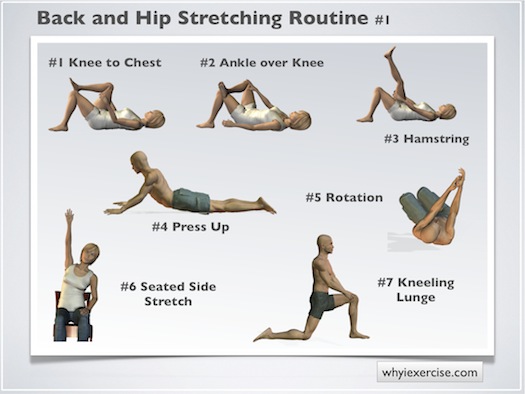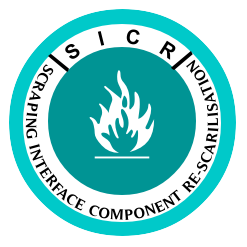 Being flexible is important for many reasons. One reason is basic functional movement. Being able to tie your shoes or put a plate up on the shelf are daily activities that can become difficult if a person has a limited range of motion. Another reason is to correct muscle imbalances that cause posture deviations and could result in pain and injury if not corrected. There are many different types of stretches. Some involve holding a position for a designated amount of time and other are more dynamic. Though there many stretching techniques I will only be focusing on 3 of them. These are Self-Myofascial Release, static stretching and dynamic stretching.
Being flexible is important for many reasons. One reason is basic functional movement. Being able to tie your shoes or put a plate up on the shelf are daily activities that can become difficult if a person has a limited range of motion. Another reason is to correct muscle imbalances that cause posture deviations and could result in pain and injury if not corrected. There are many different types of stretches. Some involve holding a position for a designated amount of time and other are more dynamic. Though there many stretching techniques I will only be focusing on 3 of them. These are Self-Myofascial Release, static stretching and dynamic stretching.Self-Myofascial Release
I am sure you have seen the foam rolls either at the gym or maybe at Target and wondered what the reason was for using the foam rolls. It is called Self-Myofascial Release. What using a foam roller does, is it inhibits overactive muscles. These are the cause a lot of time of muscular imbalances that could lead to postural imbalances which could result in pain or injury. It is very simple to perform this type of flexibility technique. Use the foam roller and begin to roll on the muscle. When you find an area that is sensitive hold the foam roller on that area for 30 seconds. There are certain implements that are going to get to deeper muscle tissue and others not as deep. This all depends on your sensitivity level. It is best to use Self-Myofascial Release before doing static stretching. First you want to inhibit the overactive muscle. One way to do this is use Self-Myofascial Release. After you have inhibited the overactive muscle the next step is to lengthen. This stretching technique is also useful for Functional flexibility as well.
Static Stretching
The most common type of stretching is static stretching. This type of stretching involves holding a position for a set amount of time as you slowly lengthen the muscle. This is the safest type of stretching that can be performed. You are in control of how far you stretch and how long you hold the stretch. It is recommended that you hold each stretch for at least 30 seconds. If you are age 60 and over you should hold each stretch for at least 60 seconds. When holding the stretch you should try to relax and do your best not to bounce or do quick movements. Doing such movements could result in injury. Also it is best to do static stretching at the end of a workout. There are different theories about when to do what type of stretch. Research has shown that performance is influenced by static stretching and may decrease jump height, balance, reaction times, and movement times.
It has also been shown that static stretching can decrease muscular strength when performed in isolation. Since you are relaxing the muscle when you stretch and not actually moving it like you would be if you were playing basketball or some other type of sport that requires movement, then holding a stretch for a set time is contradictory to the type of movement you are going to need to perform in that sport. Therefore during performance it is recommended that dynamic and active stretching be performed if there are not any muscular imbalances. It should be advised that people with muscle imbalances should continue to do static stretching until those imbalances have improved. When working with school aged children it is best to teach them static stretching since this technique allows them to control their stretch.
Dynamic Stretching
If you have ever done a Jumping Jack, Squat, Lunge or anything of that nature you have done Dynamic stretching. The definition of Dynamic stretching according to The National Academy of Sports Medicine is the use of a muscle's own force production and the body's momentum to take a joint through the full range of motion. In order to perform this type of flexibility technique one must not have any muscle imbalances and it is recommended that corrective and functional stretching techniques are used. Once the imbalances have been corrected Dynamic stretching can be performed. Dynamic stretching should be done before performance. Since the body will be moving it is best to mimic this during your warmup. If you were to do static stretching instead this would not resemble movements you will be performing and could result in inferior performance results and even possible injury.
There are many different types of flexibility techniques. The best flexibility program involves an integration of the different techniques. One cannot just do one type of flexibility technique and expect to improve every flexibility deficit. Improving your flexibility will improve your range of motion making it easier to move and do daily activities. It is best to stretch on a frequent basis to attain the best results. Stretching should never be painful. Yes, you will feel discomfort, but there is a definite difference between pain and discomfort. Be sure to make stretching a part of your daily routine in addition to your normal exercise program.
Article Source: http://EzineArticles.com/6871776
 News article | World news
News article | World news




